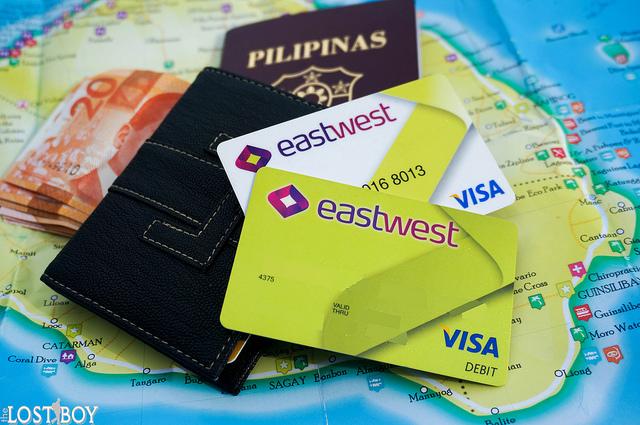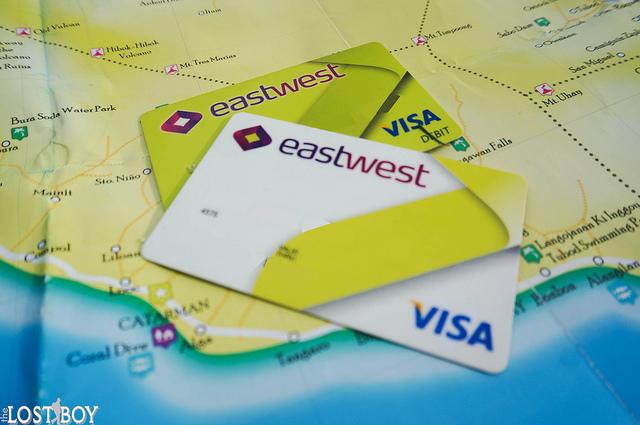I’ve always traveled with debit and prepaid cards, but I use them only occasionally to shop, eat, and buy train tickets. For everything else, I bring cash, in pesos or dollars, to be exchanged in the country I’m going to. I used to only put a small amount in my debit and prepaid cards, but what happened to me recently made me change my mind. Read more…

When we went to Borneo this month, we had to transit in Miri, Sarawak, Malaysia from Bandar Seri Begawan in Brunei. Miri isn’t as active and touristy as Kuala Lumpur and Penang, and its tourist draw seems to be people from Brunei seeking alcohol and other vices.
We arrived in Miri late in the afternoon, and after having our reservation refused by the hotel we originally booked because of full occupancy, we looked for another one. Our Filipino friends from a cafe recommended one nearby, but unfortunately, it only took cash.
The front desk recommended a mall nearby to get our money changed. We walked to the said mall and found a money exchange counter that was closed. Fortunately, there was one under the escalators manned by a rude, old man. Seeing the dismal exchange rate, I decided we change only a few dollars, just enough to last us in Miri.
I hence presented two 20 USD bills, and he shook his head. We just assumed that despite having a different exchange rate for smaller bills, he didn’t want to take small bills. We had no choice but to change our lone 100 USD bill. He examined our money then shook his head again. I asked why, and he apathetically pointed to a small stamp marking on the bill.
My stomach started to lurch, as I recall one of the Filipina waitresses telling me that money changers were closed due to some holiday. As we walked around, we figured she was right; there wasn’t any money changer open anymore. The chilling fact that our only dollars were refused by the only money changer open in the area made me very anxious. We didn’t have any ringgit anymore, as we’ve spent our last at the cafe, and our pesos when exchanged wouldn’t suffice to cover the entire deposit to the hotel. We brought only so much money because Miri was the only city we really had to spend—everything else was covered for us.
Just as I was feeling that I was about to lose my sanity, I recalled making a substantial deposit to my EastWest Bank Visa Prepaid card in Cebu specifically for the trip. Hence, upon recalling that Visa cards are accepted for cash withdrawals in over two million ATMs worldwide, we went looking, almost running, for the nearest bank.
What we saw within the area was Maybank that luckily had three or four machines that all took Visa. To cut the story short, I was able to withdraw enough ringgit to pay for the hotel, our dinner, and a cab ride to the airport the following morning.

I’ve since learned my lesson—that I should rely on debit and prepaid cards more than cash when traveling. In not-so touristy places, there are few money change counters, and a lot close early. ATMs that dispense the local currency, on the other hand, are almost everywhere and are powered 24/7. Worry not about fees, since for us Filipinos, our banks usually debit only a nominal charge for Visa international withdrawals—typically around 150 PHP.
Trip arrangements are also easier with Visa Debit and Prepaid cards, for these can be used to purchase in millions of online merchants, such as airlines, online travel agencies, and hotel booking engines. And once in the destination, the cards can be swiped in shops, restaurants, and sometimes even convenience stores and train stations. By experience, the exchange rate ends up being better than money changers.
Debit and prepaid cards are more secure than carrying cash and travelers checks, too. For instance, Visa has the 24/7 Global Customer Assistance Services (GCAS) with toll-free numbers in different countries. Whenever a card is lost, they could block the card immediately for security and send in a new one in a maximum of three business days anywhere in the world. Moreover, for these cards, especially the prepaid ones, spending is more controlled; I load my cards with only the amount allocated for that trip.
Lastly, our Philippine pesos cannot be exchanged in some countries, but on the contrary, debit and prepaid cards are universally accepted. The ones from Visa are recognized in over 200 countries and territories by tens of millions of merchants and ATMs.
Filipinos are now adapting to the trend in prepaid cards, as more than a third of business and leisure travelers see prepaid cards as a viable replacement to cash according to the Visa Prepaid Travel Card Survey 2013. Likewise, Visa recently saw a 49% growth of prepaid cards in the Philippines. With the benefits and security, it’s time for every traveler to own one.
WHERE TO GET A DEBIT AND PREPAID CARD IN THE PHILIPPINES
Different banks offer Visa Debit and Prepaid cards, although I got mine from EastWest Bank. Their Basic Savings Account that already comes with a Visa Debit ATM card needs only a 100 PHP maintaining balance, while their Visa Prepaid card is also available at only 100 PHP with a five-year validity with no balance to maintain. Applying is pretty easy and only takes minutes, so check out www.eastwestbanker.com for the requirements. Other banks that issue Visa Debit and Prepaid cards here include BDO, RCBC, and UnionBank.


posted on 24 May at 12:51
more information on debit/prepaid cards
http://honeyganda.blogspot.com/2011/06/debit-cards-to-manage-your-finances.html